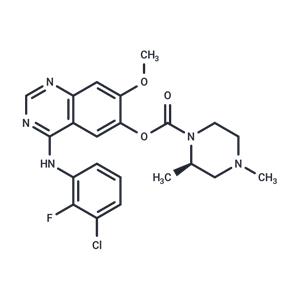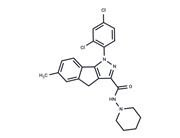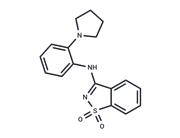| Name | Zorifertinib |
| Description | Zorifertinib (AZD3759) is an orally active, effective and central nervous system-penetrant EGFR inhibitor. The IC50 values were 0.2, 0.3 and 0.2 nM for EGFR L858R mutant, TK wild-type, and Exon 19Del enzymes, respectively. |
| Cell Research | Cell proliferation assay is determined by MTS methods. Briefly, cells are seeded in 96-well plates (at a density to allow for logarithmic growth during the 72-hour assay) and incubated overnight at 37 °C and 5% CO2. Cells are then exposed to concentrations of compounds ranging from 30 to 0.0003 mM for 72 hours. For the MTS endpoint, cell proliferation is measured by the CellTiter AQueous Non-Radioactive Cell Proliferation Assay reagent in accordance with the manufacturer's protocol. Absorbance is measured with a Tecan Ultra instrument. Predose measurements are made, and concentration needed to reduce the growth of treated cells to half that of untreated cells (GI50) values are determined using absorbance readings.(Only for Reference) |
| Kinase Assay | IC50 determination of compounds against EGFR enzymes: The inhibition potency of compounds against EGFR WT and mutant enzymes is assessed using CisBio homogenous time resolved fluorescence approach (HTRF, Cat No. 62TK0PEJ) according to manufacturer's instruction. The final enzyme concentrations used in this assay are 0.1 nM, 0.03 nM, and 0.026 nM for EGFR wild type, L858R and Exon19Del, respectively, and 0.8 μM, 4 μM and 25 μM ATP, corresponding to the Km values of EGFR enzymes, are applied accordingly. In brief, 3 μL of ATP and 2 μM TK biotin-peptide substrate are incubated in the presence or absence of serially diluted compound at room temperature in 384-well Greiner white polystyrene assay plates. The reaction is initiated by addition of 3 μL kinase which could phosphorylate the substrate peptide, and the assay buffer contains 1 mM DTT, 5 mM MgCl2, 1 mM MnCl2, and 0.01% CHAPS. After 30 minutes incubation, the reaction is stopped by the addition of 6 μl detection reagent mix containing 250 nM Strep-XL665 and TK Ab Europium Cryptate diluted in detection buffer. The plates are incubated for 1 h before the fluorescence is then measured at 615 nm and 665 nm, respectively with excitation wavelength at 320 nm by EnVision Multilabel Reader from Perkin Elmer using standard HTRF settings. The calculated signal ratio of 665 nm/615 nm is proportional to the kinase activity. The concentration of compound producing 50% inhibition of the respective kinase (IC50) is calculated using four-parameter logistic fit. |
| In vitro | In H3255 (L858R) cells, AZD3759 inhibits EGFR phosphorylation with IC50 of 7.2 nM. AZD3759 demonstrates inhibitory effects on both the pEGFR pathway and cell proliferation of EGFR mutation-derived cells PC-9 and H3255 with IC50 of 7.7 nM and 7 nM, respectively, showing mo activity on cell proliferation of H838 cells. [1] |
| In vivo | AZD3759 shows good oral bioavailability in dogs, and penetrates extensively into monkey brain. In a brain metastasis PC-9 (Exon19Del) model, AZD3759 (15 mg/kg) causes significant dose-dependent antitumor efficacy. [1] |
| Storage | Powder: -20°C for 3 years | In solvent: -80°C for 1 year | Shipping with blue ice. |
| Solubility Information | H2O : < 1 mg/mL (insoluble or slightly soluble)
DMSO : 50 mg/mL (108.72 mM)
Ethanol : 18 mg/mL (39.1 mM)
|
| Keywords | AZD-3759 | inhibit | ErbB-1 | Zorifertinib | HER1 | EGFR | Inhibitor | Epidermal growth factor receptor | AZD 3759 |
| Inhibitors Related | Osimertinib | Lidocaine Hydrochloride hydrate | Lapatinib | Afatinib Dimaleate | Erlotinib hydrochloride | Erlotinib | Neratinib | Chalcone | Osimertinib mesylate | Genistein | Khellin | Gefitinib |
| Related Compound Libraries | Bioactive Compound Library | Membrane Protein-targeted Compound Library | Kinase Inhibitor Library | Tyrosine Kinase Inhibitor Library | Anti-Cancer Clinical Compound Library | Drug Repurposing Compound Library | Inhibitor Library | Bioactive Compounds Library Max | Anti-Cancer Active Compound Library | Anti-Cancer Drug Library |

 United States
United States



